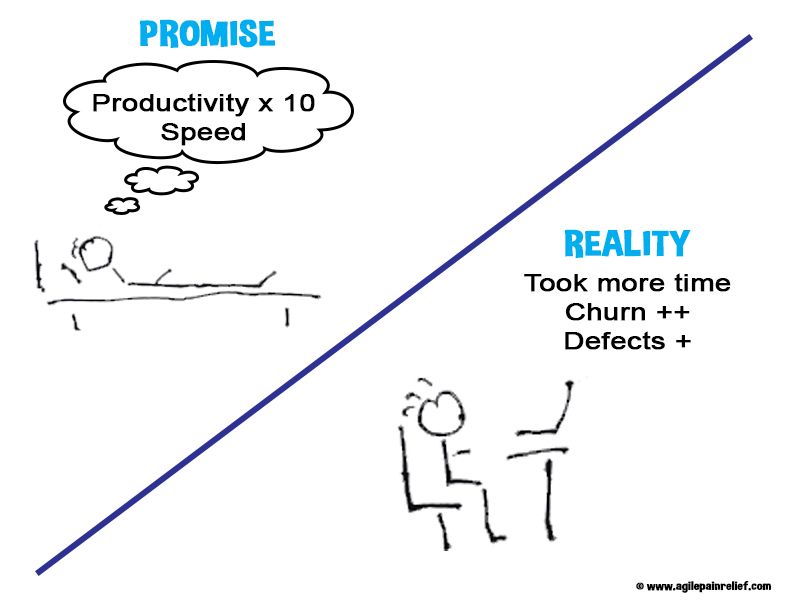Why Scrum Works??

In the previous two posts in this series we examined how Scrum provides value to business and why. This post continues the second theme examining the remaining elements of Scrum.
Artifacts
Product Backlog
Basics:
The product backlog is a prioritized list of features of everything needed and wanted in the finished product. To minimize waste only the next few iterations worth of stories are provided in any detail. The list is maintained by the product owner.
Values Supported:
- Visible Long Term Goal
Sprint Backlog
Basics:
The sprint backlog is the list of stories that team committed to for the iteration. It is broken down into small tasks with estimates. It is a closed list, once the team has committed no new tasks are added. Only tasks that the discovers are missing will be added.
Values Supported:
- A closed list gives the team an achievable target for the sprint. In the typical environment the team has an open ended list of features and bugs which is always. This is demoralizing since you never really know when your going to be finished. The sprint backlog is just the opposite. Since it’s a closed list the team can see their progress through the sprint as the tasks remaining grow fewer. (Do It Tomorrow and Other Secrets of Time Management by Forster Chapter 7 Closed Lists.)
People
Scrum Master/Facilitator
Basics:
Coaches (but doesn’t lead) the team and removes roadblocks. Acts in the role of servant Leader.
Values Supported:
- Shortens the learning curve of adoption of Scrum both for individuals and the team
- Provides monitoring and feedback so that the agreed upon process is adhered to
- Handles process activity communication with Product Owner and organization so team focus entirely on value delivery - Running interference for the team the ScrumMaster reduces the Random Factor (Do It Tomorrow and Other Secrets of Time Management by Forster Chapter 6 Emergency, What Emergency) so that team members are able to stay focused on their tasks instead of flitting between tasks (one of the worst drains on productivity).
Self Managing Team
Basics:
Perhaps the most important aspect of Scrum that often gets overlooked. The team is self managing. Once they’ve agreed on the iteration’s commitments with the product owner, the team is entirely responsible for delivering the product. Team members choose their own tasks; this often means that several team members will work on a single story.
Values Supported:
- More than one team member familiar with every aspect of the product
- Freedom to select tasks to work improves personal commitment
- Teams perform work load balancing better than any one person with a plan and MS project. In all of the Scrum teams that I’ve worked with, the constant open interaction creates a great sense of personal commitment as we pitch in to help each other solve problems.
Scrum provides the framework to create high performance teams, by supporting many of characteristics necessary for their formation. However nothing can guarantee their formation.
Does every Scrum project succeed - of course not (projects can fail using any methodology). Is it the Silver Bullet (aka Fred Brooks The Mythical Man Month)? of course not - but none the less it works and helps many teams focus on delivering value to the customer every day.
Thanks to Larissa Berger, Norbert Winklareth and Mishkin Bertieg for their feedback and guidance in writing this.
Image via: https://photodune.net/

Mark Levison
Mark Levison has been helping Scrum teams and organizations with Agile, Scrum and Kanban style approaches since 2001. From certified scrum master training to custom Agile courses, he has helped well over 8,000 individuals, earning him respect and top rated reviews as one of the pioneers within the industry, as well as a raft of certifications from the ScrumAlliance. Mark has been a speaker at various Agile Conferences for more than 20 years, and is a published Scrum author with eBooks as well as articles on InfoQ.com, ScrumAlliance.org and AgileAlliance.org.
